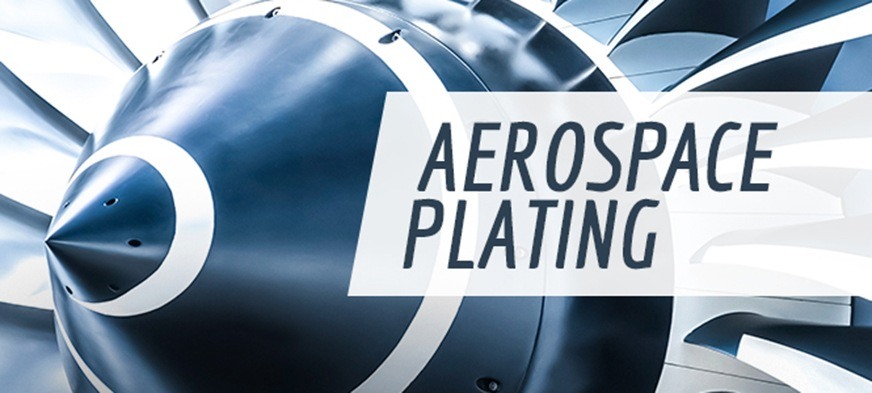
Aerospace Plating
The United States aerospace industry is a vital component of the nation's economy. The industry directly employs approximately 500,000 workers, and another 700,000 individuals work in related industries. Major domestic manufacturers such as Boeing and Lockheed Martin produce aircraft for domestic airlines and the U.S. defense industry. Foreign nations also depend on aerospace products manufactured in the USA. Exports of aerospace products resulted in sales of $118.5 billion in 2012, resulting in a positive trade balance of $70.5 billion. This represented the highest surplus of any U.S. industry.
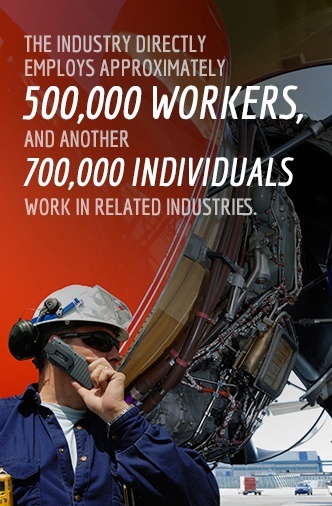
The U.S. aerospace industry encompasses the following subsectors:
- General Aviation
- Commercial Space
- Aircraft Engines
- Rotorcraft
- Large Civil Aircraft
- Unmanned Aircraft Systems
- Airport Infrastructure/Aviation Security
- Alternative Aviation Fuels
- Supply Chain (repair, maintenance, metal-working, coating, etc.)
Reliability Is Critical in Any Aerospace Manufacturing Process
When you consider that much of the aerospace industry is focused on the production of aircraft, quality is of utmost importance in the manufacturing process. Aircraft parts and components must be reliable, as a part failure could have disastrous consequences.
In 1999, SAE International (formerly known as the Society of Automotive Engineers), a U.S.-based professional association and standards organization serving various industries such as automotive and aerospace, instituted a revised quality-management system for the aerospace industry. Known as AS9100, this quality-management system incorporates the current version of the ISO 9000 standards, while also including additional quality and safety requirements. All global aerospace manufacturers and suppliers must comply with this stringent quality-management system.
The Use of Titanium in Aerospace Manufacturing
Much of the modern aerospace industry now depends on titanium and titanium alloys for the manufacturing of various aircraft parts and components. Titanium offers the ideal combination of light weight, high strength and low density that is ideally suited for flight applications. Large amounts of titanium are used to manufacture U.S. military aircraft such as the F-22, F-35 and UH-60 Black Hawk helicopter, as well as commercial aircraft such as the Boeing B787 and the AirBus A380.
The Importance of Aerospace Metal Plating
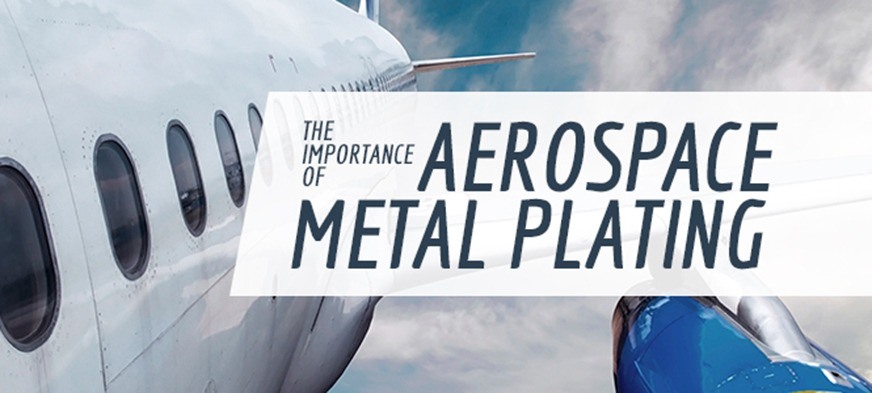
Whether titanium or other metals are used in aircraft manufacturing, electroplating and electroless plating are essential aerospace metal finishing processes. Electroplating entails the coating of a metal surface with ions of another metal through the use of electrodeposition. Electroless plating also involves the deposition of metal, but the process relies on a chemical reaction to apply the coating instead of electricity. Benefits of metal plating include:
- Enhancing corrosion protection
- Improving the strength of the metal substrate
- Increasing resistance to high temperatures
- Lengthening part and component lifespan
- Enhancing electrical conductivity
- Increasing oxidation resistance
- Adding aesthetic appeal
We’ll now take a closer look at some of the various aerospace metal finishing and plating processes and applications.
Plating on Titanium
Because of the pervasive use of titanium in the aerospace industry, it has become necessary to develop an effective process for plating on titanium. The problem is titanium is an extremely active metal that quickly forms an oxide film. This makes it difficult for other metals to form a bond with a titanium substrate. Few aerospace metal finishing companies currently possess the expertise to successfully plate metals onto a titanium surface. Processes have been developed that enable the plating of nickel onto titanium. An underlying nickel coating facilitates the bonding of other metals.
Corrosion Protection
Aircraft parts and components are highly susceptible to atmospheric corrosion, which is a primary concern of aerospace manufacturers. The damage inflicted by corrosion is much more than cosmetic. It can penetrate titanium, aluminum, steel and magnesium parts and components and weaken their structural integrity.
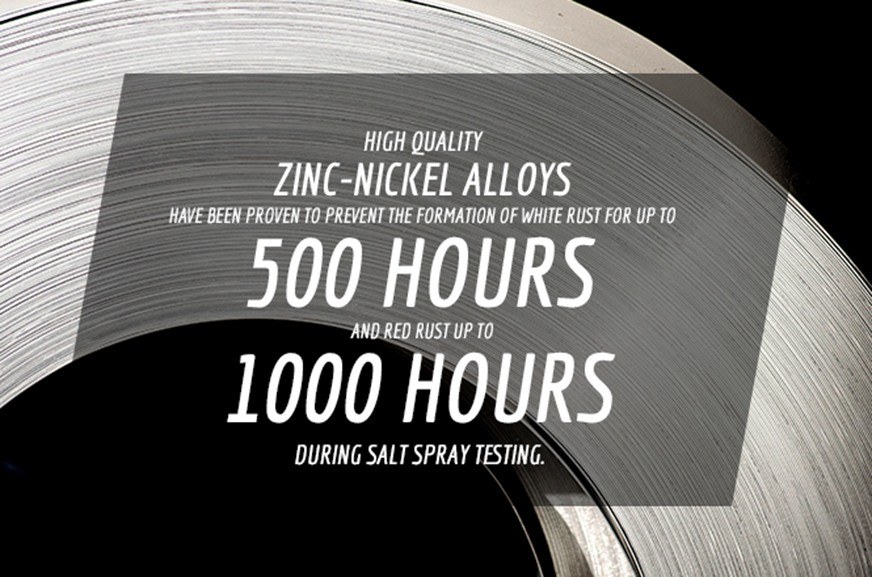
The application of a zinc-nickel coating can be extremely effective as an aerospace metal plating technique. The zinc-nickel acts as a sacrificial coating, which means it will absorb the brunt of the corrosion before it can reach the substrate. High quality zinc-nickel alloys have been proven to prevent the formation of white rust for up to 500 hours and red rust for up to 1,000 hours during salt spray testing.
Another reliable but less frequently used aerospace metal plating process to fight corrosion is cadmium plating. A cadmium coating can prevent corrosion on aircraft engines, landing gear, bolts and a wide range of major structural components made from steel or aluminum alloys. Cadmium coating techniques include bright cadmium plating, dull cadmium plating and titanium-cadmium plating. The drawback to using cadmium for aerospace plating applications is that because of its toxic nature, working with cadmium can pose certain health risks. Regulations are in place that restrict the use of cadmium in industrial and manufacturing processes.
Pre-Braze
Many aircraft manufacturing processes involve brazing, which is the joining of two metal surfaces via an application of an alloy of copper and zinc at high temperatures. However, pre-blazing is required to ensure proper wetting of the metal surfaces. The electrodeposition of a nickel coating is an essential pre-brazing process that provides faster and more consistent results than other nickel application techniques. Pre-brazing is typically used in the manufacturing of turbine blades, frames, stators and vanes.
Surface Enhancement
As most aircraft are typically operated under extreme conditions, they are highly vulnerable to the impact of wear and tear over time. Another common aerospace metal finishing technique is the application of nickel or a nickel alloy via electrodeposition. This increases the hardness of the substrate, which subsequently increases its wear resistance. The nickel also provides the additional benefit of enhanced corrosion protection.
Refurbishment
Aerospace metal finishing can also be used for the refurbishment of parts. The electrodeposition of a nickel coating or the application of an electroless nickel deposit can help to achieve dimensional restoration on the inside or outside of a part or component.
Anodizing
Anodizing is a metal finishing process used to increase the thickness of the oxide layer on the surface of a substrate. The treated part forms an anode electrode that is used to complete an electrical circuit. The general benefits of anodization are similar to many of those provided by electroplating and include:
- Increased corrosion resistance
- Enhanced resistance to wear and tear
- Improved surface hardness
- Increased aesthetic appeal
- Lengthened part/component lifespan
General anodizing applications in terms of aerospace metal finishing include providing a protective coating on engine parts and components, landing gear, airframes and actuators.
The types of anodizing include:
- Chromic anodizing (Type 1): This anodizing process entails the use of chromic acid to create a thin, electrically non-conductive aluminum oxide film. The Type 1 coating is best suited for use with aluminum, flight-critical components such as landing gear that are routinely subjected to high levels of stress.
- Aluminum anodizing (Type 2): Aluminum anodizing is used to enhance the substrate’s corrosion and wear resistance. Sulfuric acid is used to create a thicker aluminum oxide film than with Type 1 anodizing. The coating can be clear or in colors such as black, green, red, gold and blue.
- Hard coat anodizing (Type 3): Hard coat anodizinguses a combination of relatively low plating bath temperature and constant rectification of the electrical current to develop an extremely hard oxide film coating. The coating can range from light to dark gray in color and can even be dyed black if desired. Hard coat anodizing provides substantial corrosion protection and wear resistance, along with excellent lubricity.
Electroless Nickel Plating
As mentioned previously, electroless plating is a process that produces a metal coating via chemical reaction. This provides a more even, uniform coating to hard-to-reach areas on the surface of a substrate. Nickel is typically the metal of choice in many manufacturing applications, including the aerospace industry. The various types of nickel alloys used in electroless nickel plating will depend on the desired result:
- High phosphorous (10-13%): Offers the best protection against corrosion and provides excellent resistance in highly acidic environments.
- Medium phosphorous (5-9%): The best choice when the aesthetic appearance of the substrate is of primary importance.
- Low phosphorous (less than 5%): Provides increased surface hardness and excellent solderability, as well as the best resistance in alkaline environments.
Other specific electroless nickel plating applications include increasing lubricity and chemical resistivity on engine mounts and shafts, pistons, valves, compressor blades and other flight-critical parts and components.
A relatively recent electroless nickel plating innovation has been the development of black electroless nickel coatings. In terms of the aerospace industry, a black electroless nickel coating serves the vital function of light and energy absorption. Prior to the development of viable black electroless nickel coatings, manufacturers had to resort to darkening the part with black paint or other materials. Black electroless nickel offers a more effective and permanent solution, while also offering the advantage of withstanding harsh climates and environments. Black electroless nickel is sometimes used for aesthetic purposes whenever an attractive black finish is required.
Get Started TodayRequest a free quote
For Aerospace Plating
Wet Blasting
Wet blasting is frequently used as part of the aerospace metal finishing process. Wet blasting involves the use of high-pressure compressed air to propel a combination of abrasive media and liquid onto the surface of a substrate. Wet blasting is particularly effective for surface preparation applications such as paint removal, degreasing, mold cleaning and general dirt and debris removal. Parts that can benefit from wet blasting include jet engine turbine discs, turbines and fan blades to name a few.
Wet blasting is particularly suited to the high-precision manufacturing processes employed in the aerospace industry, as it offers the benefit of reliable process control. Operators have the capability to adjust parameters to the task at hand. For instance, the process can easily be altered by modifying the blast pressure and/or changing the type of blasting media. This can meet the requirements of cleaning applications ranging from extremely delicate to highly aggressive. Regardless of media type or pressure, the use of liquid helps to cushion the impact and protect the part or component against possible damage.
Passivation
Passivation is a metal finishing process where iron and iron ores are removed from the surface of stainless steel substrates used in aerospace manufacturing. The passivation process occurs via chemical dissolution involving the application of an acid solution to remove surface contamination. This helps to protect and preserve aircraft parts and components by slowing the onset of corrosion. Thus, passivation can be viewed as a combination cleaning/protection procedure.
Chemical Film
Chemical film involves the application of a metal surface coating that is created via a reaction between the surface of aluminum or aluminum alloys and chemical conversion materials. The coatings are classified by various types and classes and are often used to provide additional corrosion protection or to promote paint adhesion. Depending on the type, the chemical film coating can be clear or produce a colored finish such as brown or gold.
SPC Can Meet All of Your Aerospace Metal Plating and Finishing Requirements
Since we have 90 years of experience to draw upon, you can count on the experts at Sharretts Plating Company for all of your aerospace plating and metal finishing needs. Over the years, we’ve developed numerous metal finishing processes ideally suited for the aerospace industry. For instance, we’re one of the few companies in our industry that has developed a successful method for plating on titanium. We’re also at the forefront of electroless nickel plating innovation. We created an effective black electroless nickel coating called SMITH-EN-BLACK™ that is rapidly gaining acceptance for various aerospace industry manufacturing operations.
SPC is also a quality-focused aerospace metal finishing company. We’ve been as ISO-certified company since 1994, and we were the first U.S. industrial metal finishing company to earn the prestigious Best Manufacturing Practices Award from the Department of the Navy. The unwavering commitment to providing high-quality products and services extends to every area of our operation.
Additional Resources:
Contact Us to Get a Quote for Our Aerospace Metal Finishing Services
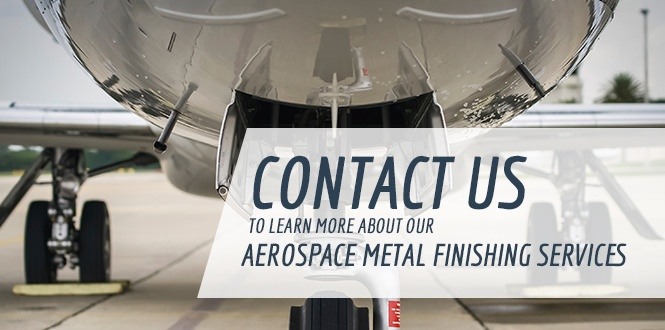
Discover the many ways in which the aerospace metal finishing services from SPC can benefit your aerospace manufacturing operation. Receive a no-obligation quote today. And be sure to subscribe to our free e-newsletter to stay abreast of the latest aerospace plating and metal finishing developments.
LEARN WHAT OUR MANY SATISFIED CUSTOMERS HAVE TO SAY ABOUT Us
"I would like to thank you for the help you have provided us in developing an electroless nickel plating technique on an unusual substrate. The sample platings you provided show that we should be able to reach our goals. I especially appreciate your willingness to take on an unusual job, with the uncertainties that that entails...We are looking forward to working with you in the future on our plating needs."
– Robert K.



